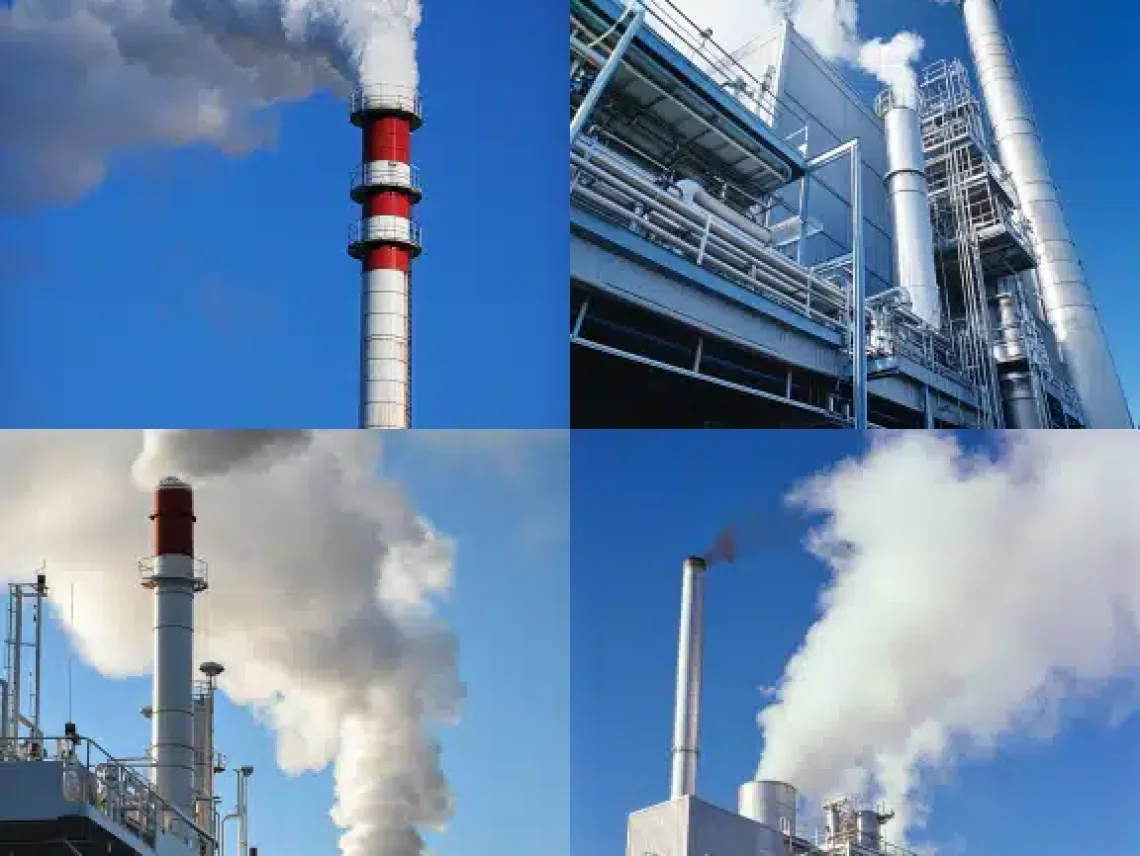Understanding the Role of Scrubbers in CO2 Emission Reduction

Table of Contents
ToggleThe Role of Scrubbers in CO2 Emission Reduction
In commercial air pollutant manipulation, Scrubbers in CO2 Emission Reduction, play a key role in mitigating emissions of particulate matter, acidic gases, volatile organic compounds (VOCs), and hazardous air pollutants (HAPs). However, their effectiveness in reducing carbon dioxide (CO2) emissions, a primary greenhouse gas, requires regular assessment. This article examines the role of scrubbers in reducing CO2 emissions, highlights their limitations, and explores alternative technologies and their broader implications for environmental sustainability.
Scrubbers and CO2 Emissions: What You Need to Know
Focus on Other Pollutants:
Scrubbers in CO2 Emission Reduction are specifically designed to capture and eliminate particulate matter and harmful gases like SO2, NOx, VOCs, and HAPs from industrial exhaust streams. This functionality significantly contributes to improving air quality while mitigating direct health and environmental risks.
Limitations in CO2 Removal:
While scrubbers are effective for many pollutants, their role in CO2 removal faces notable challenges:
- Chemical Composition: Unlike pollutants targeted by scrubbers, CO2 is a stable, non-reactive gas. Since CO2 does not undergo chemical transformation during scrubbing, conventional scrubbers are not engineered to capture or reduce its emissions.
- Economic Feasibility: Capturing CO2 requires immediate solutions for storage and transportation. These processes often demand large-scale infrastructure and incur significant costs, making traditional scrubber technology unsuitable for CO2 removal.
Alternative CO2 Capture Technologies:
Given the limitations of scrubbers, industries are turning to specialized CO2 capture technologies, including:
- Carbon Capture and Storage (CCS): CCS systems are designed to capture CO2 emissions at the source using chemical solvents or solid adsorbents. Once captured, CO2 is stored underground or integrated into commercial applications.
- Carbon Capture and Utilization (CCU): This approach transforms captured CO2 into valuable products such as fuels, chemicals, and construction materials. By doing so, CCU offers both environmental and economic incentives through reduced CO2 emissions and added revenue streams.
Environmental Impact and Sustainability:
Although scrubbers do not directly reduce CO2 emissions, they contribute to environmental sustainability by addressing other pollutants. Their ability to improve air quality and mitigate public health risks indirectly supports long-term climate goals.
To effectively tackle CO2 emissions, industries must adopt technologies like CCS and CCU. These innovations go beyond traditional scrubbing to capture and repurpose CO2, paving the way for sustainable industrial practices and helping combat global warming.
Need a reliable partner?
FAQ About Scrubbers and CO2 Emissions
Can scrubbers lessen CO2 emissions from business sources?
No, scrubbers are specifically designed to capture particulate matter and harmful gases such as SO2, NOx, VOCs, and HAPs. However, they are not effective in capturing or reducing CO2 emissions. Instead, specialized carbon capture technologies are required to tackle this challenge.
Why are scrubbers no longer powerful in CO2 removal?
CO2, being a stable and non-reactive gas, does not undergo chemical transformation during standard scrubbing processes. Scrubbers are optimized for pollutants that either react chemically or are absorbed by scrubbing media, which excludes CO2.
What technology are powerful for capturing CO2 emissions?
To address CO2 emissions effectively, industries rely on advanced technologies such as Carbon Capture and Storage (CCS) and Carbon Capture and Utilization (CCU). These systems are specifically designed to capture CO2 at its source, providing innovative solutions for storage or conversion into useful products.
How do industries gain from lowering CO2 emissions alongside one-of-a-kind pollutants?
Lowering CO2 emissions contributes to global climate goals and supports corporate sustainability initiatives. Additionally, industries adopting these technologies might gain economic benefits, including improved carbon credit scores or new revenue opportunities from repurposed CO2.
Are there regulatory incentives for imposing a CO2 capture era?
In certain regions, regulatory incentives, subsidies, or carbon pricing mechanisms encourage industries to adopt CO2 capture technologies. These measures aim to reduce greenhouse gas emissions while motivating industries to innovate for a sustainable future.
Table of Contents
ToggleRelated Blog Post
- Do coal scrubbers work?
- How long do scrubbers last?
- What do scrubbers get rid of?
- Which scrubber is most effective?
- What are the three types of scrubbers?
- What are the disadvantages or scrubbers?
- What chemicals are used in scrubbers?
- What are the advantages or a scrubbers
- What is the biggest problem with wet scrubbers?
Solutions
In the realm of industrial solutions, Red River emerges as a pioneer, offering a diverse range of custom-engineered products and facilities. Among our specialties is the design and production of Custom/OEM Pressure Vessels, meticulously crafted to meet individual client requirements, ensuring performance under various pressure conditions. Our expertise extends to the domain of prefabrication, where Red River leads with distinction.
The company excels in creating prefabricated facilities, modules, and packages, reinforcing its stance as a forerunner in innovation and quality. This proficiency is further mirrored in their Modular Skids offering, where they provide an array of Modular Fabricated Skid Packages and Packaged equipment. Each piece is tailored to client specifications, underlining their commitment to delivering precision and excellence in every project they undertake.
